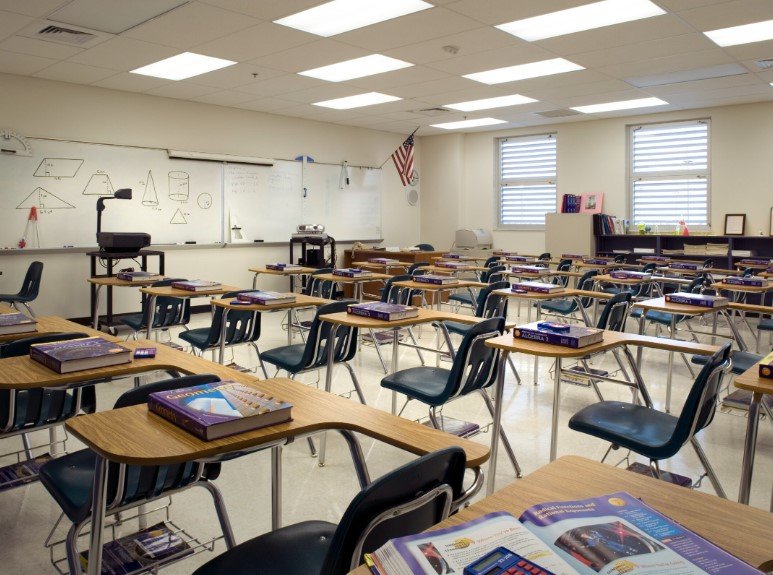Promise Scholarship draws thousands amid growing dissatisfaction with public education
Thousands of parents across Georgia are making a bold shift as the school year kicks off, opting out of the state’s lowest-performing public schools. Their ticket out? A new taxpayer-funded scholarship that’s causing both relief and controversy in equal measure.
The Georgia Promise Scholarship, offering up to $6,500 per child, is reshaping how some families think about education. Whether it’s tuition at a small private school or help with homeschooling materials and therapy, the money gives them the freedom to choose a path they believe actually works.
And for many, it’s a lifeline they didn’t know they’d get.
Escape From the Bottom 25%
It’s no secret that some Georgia public schools have struggled for years. Low test scores, teacher turnover, and underfunding plague districts across the state.
This scholarship targets families zoned for those schools — the ones officially ranked in the bottom 25% statewide. That includes hundreds of campuses from Savannah to the outskirts of Atlanta.
Some families have been stuck for generations.
One mother in Augusta, who asked not to be named, said her son’s middle school “wasn’t safe, wasn’t supportive, and wasn’t teaching him anything.” She used the Promise Scholarship to enroll him in a small private Christian academy this fall. “It’s night and day,” she said. “He actually wants to go to school now.”

How the Program Works
The Georgia Promise Scholarship isn’t just another education voucher.
Here’s what it covers:
-
Private school tuition
-
Homeschooling costs (including curriculum and supplies)
-
Tutoring services
-
Special education therapy and resources
The cap is $6,500 per student, paid directly to approved providers. Parents apply through a state portal, and funds are distributed on a rolling basis.
State officials say over 13,000 families have applied since the program launched quietly earlier this summer.
That number surprised even some lawmakers.
The Families Who Jumped First
The early wave of applicants cuts across rural counties, Atlanta suburbs, and small towns like Rome and Albany. Some families are choosing accredited private schools. Others are crafting personalized homeschool plans. A few are using the funds for specialized tutors or speech therapy.
And in some cases, parents are doing a mix of everything.
Nicole R., a mom in Macon, created a hybrid schedule. Her son goes to a private co-op two days a week and does structured home learning the rest. The scholarship pays for both. “I never thought we’d afford anything like this,” she said. “We’re not rich. We’re just tired of being ignored.”
The Georgia Department of Education said most applications are coming from counties with traditionally under-resourced schools — Clayton, Bibb, Dougherty, and parts of DeKalb.
Who Qualifies and Who Doesn’t
Eligibility rules are strict — and controversial.
To apply, a student must be:
-
Zoned for a public school in the lowest 25% statewide
-
A legal Georgia resident
-
Enrolled in a public school or newly entering kindergarten
Critics argue this leaves out struggling students in middle-ranked schools and ignores families whose local schools are underperforming but not in the “worst” quartile.
There’s also concern the $6,500 cap still doesn’t cover full tuition at many private institutions. One Atlanta-area prep school charges $16,000 annually for kindergarten.
Still, for some families, partial help is better than no help at all.
Critics Say It’s a Shortcut With Long-Term Costs
Not everyone’s cheering. Public school advocates worry the program could pull resources away from already struggling campuses.
“This is a Band-Aid,” said Lisa Dawson, a teacher in Fulton County. “It doesn’t fix the system. It just lets people run from it.”
There’s also concern about oversight. Where’s the accountability for homeschool spending? How do you measure results from a private tutor?
Lawmakers say more guidelines are coming. For now, the focus is speed — getting families out of failing schools before another year gets wasted.
Mixed Reactions From Educators
Some teachers see it as a wake-up call. Others see it as an insult.
Jennifer Clay, a veteran teacher in southwest Georgia, said she understands why parents are leaving. “We don’t have supplies. We’re exhausted. We’re begging for help and not getting it,” she said.
She also worries it’ll get worse. “Now we’ll lose more kids. And with them, we lose money. It’s a vicious circle.”
Meanwhile, some private school leaders are embracing the new demand. Several small academies have expanded capacity in anticipation of new enrollments from Promise-funded students.
By the Numbers: Where It’s Going
The Georgia Department of Education hasn’t released detailed breakdowns yet, but early reports show the Promise Scholarship funds are spreading fast.
Here’s a snapshot of how the first 9,000 approved scholarships are being used:
| Use Case | % of Total Awards |
|---|---|
| Private School Tuition | 61% |
| Homeschool Curriculum | 19% |
| Therapy and Special Needs | 11% |
| Tutoring Services | 7% |
| Other | 2% |
More detailed district-level data is expected by late September.
What Comes Next
The pilot program is capped — for now. Lawmakers set aside $90 million for the 2025–26 school year. If demand grows, that pot may run dry fast.
And if applications cross 15,000 this fall, the debate will only get louder. Already, statehouse chatter hints at either expanding or tightening eligibility next year.
But for now, families like the Johnsons in Augusta are just grateful.
“We’re finally in a position to choose what’s best for our daughter,” said Melissa Johnson. “That’s worth more than money.”
